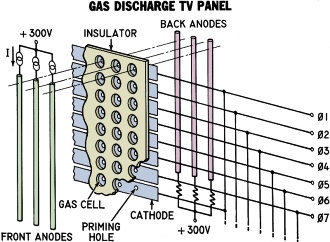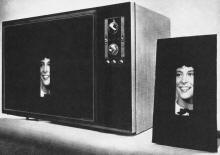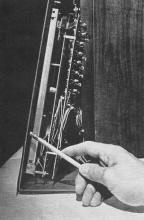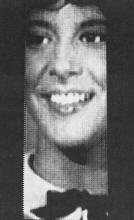|
January 1973 Popular Electronics
 Table of Contents Table of Contents
Wax nostalgic about and learn from the history of early electronics. See articles
from
Popular Electronics,
published October 1954 - April 1985. All copyrights are hereby acknowledged.
|
 Although not routinely referred to as plasma
displays at the time, the "thin TV displays" reported in this 1973 article in Popular
Electronics magazine was one of the first instances of commercially viable schemes.
According to Wikipedia, Fujitsu introduced the first
full-color
plasma display panel (PDP) in 1992 - with a 21" screen - two decades after this
device 80x212-pixel monochrome designed by Zenith. I remember seeing the
42" Fujitsu
plasma TVs in Best Buy
with a $10,000 price tag sometime in the mid 1990s, which jives with Fujitsu's stated
plan of selling the first units at around 1 million yen (~$8,800 at today's exchange
rate). Prior to the advent of plasma displays,
rear-projection screen televisions were the main way to get really
large displays. While rear-projection displays suffered from narrow viewing angles,
plasma displays suffered from pixel burn-in that gradually reduced contrast to annoyingly
low levels. Both options carried a relatively large price tag compared to 25" and
27" CRT televisions. Although not routinely referred to as plasma
displays at the time, the "thin TV displays" reported in this 1973 article in Popular
Electronics magazine was one of the first instances of commercially viable schemes.
According to Wikipedia, Fujitsu introduced the first
full-color
plasma display panel (PDP) in 1992 - with a 21" screen - two decades after this
device 80x212-pixel monochrome designed by Zenith. I remember seeing the
42" Fujitsu
plasma TVs in Best Buy
with a $10,000 price tag sometime in the mid 1990s, which jives with Fujitsu's stated
plan of selling the first units at around 1 million yen (~$8,800 at today's exchange
rate). Prior to the advent of plasma displays,
rear-projection screen televisions were the main way to get really
large displays. While rear-projection displays suffered from narrow viewing angles,
plasma displays suffered from pixel burn-in that gradually reduced contrast to annoyingly
low levels. Both options carried a relatively large price tag compared to 25" and
27" CRT televisions.
Thin TV Display Panel

Zenith device has same apparent resolution as conventional CRT.
Research scientists from Zenith Radio recently unveiled their version of a thin
TV display panel whose 5/8" thickness produces a picture that, except for brightness,
rivals that of a conventional CRT.
The experimental unit uses a Burroughs "Self-Scan" panel consisting of 80 columns
and 212 rows of gas cells, at present producing a red picture due to the neon gas
used. At the present state of development, the panel has a peak luminance of 8 foot-lamberts,
and a contrast ratio of 40:1.
In operation (see at left), a full line of cells is addressed at the same time
and the incoming video is stored in 80 individual capacitors that control the current
sources for each column. Modulating these currents produces a wide-range linear
gray scale.

Comparison between the thin panel and conventional color receiver.

Without the associated electronics, the panel is only 5/8" thick.
The illumination time of the full line of gas-discharge cells is 60 microseconds
compared to the 100-nanosecond excitation time of each phosphor dot in a color CRT.
In the thin panel, light is emitted from each cell only as long as the current
is applied, and there is no persistence.
In the test demonstration, the 5/8" thick panel was 2.4" wide by 6.3" high and
the 25" color CRT was masked to show a picture of the same dimensions. The apparent
picture resolution was similar as the photos show.
 Dr. Robert Adler, Zenith vice president
of research said, "What we have learned is encouraging. However, there are many
problems to be solved before these panels can be considered for product use. The
present panel produces a red monochrome picture, and three colors must be produced
in the panel. Each column of the display requires a driver which in a commercial
unit would mean 1500 separate drivers. This will require IC's that can handle the
needed voltage. And, finally, much higher luminance and better power utilization
will be required." Dr. Robert Adler, Zenith vice president
of research said, "What we have learned is encouraging. However, there are many
problems to be solved before these panels can be considered for product use. The
present panel produces a red monochrome picture, and three colors must be produced
in the panel. Each column of the display requires a driver which in a commercial
unit would mean 1500 separate drivers. This will require IC's that can handle the
needed voltage. And, finally, much higher luminance and better power utilization
will be required."
The receiver screen is masked to show same area as panel. (Right) Close-up of
panel shows excellent resolution.
Posted March 1, 2024
(updated from original post on 10/5/2017)
|





